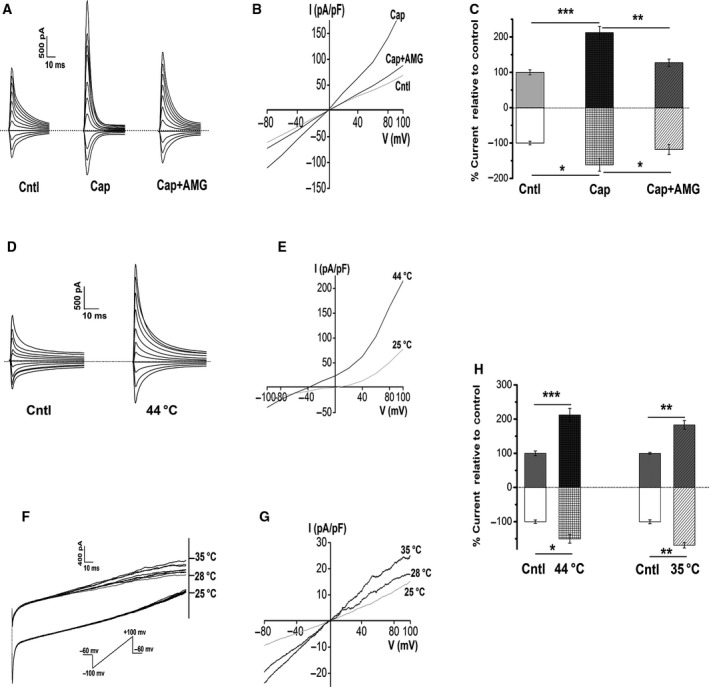Figure 4.

Activation of thermo‐TRPVs in Eca109 cells by different temperature ranges and agonist in a whole‐cell patch‐clamp configuration. (A) Representative membrane currents in response to 20 μm capsaicin in the absence or presence of 10 nm AMG9810 (n = 5 cells). Dashed lines, zero current or potential level. (B) Current–voltage (I–V) relationship for the currents shown in A. A large outward rectified current was found in the presence of 20 μm capsaicin. (C) Summary of currents shown in A, note that the outward currents (above zero) and inward currents (below zero) were both enhanced substantially in response to 20 μm capsaicin, and both were inhibited markedly by 10 nm AMG9810; data were normalized to the control. (D) Sample membrane currents on the exposure to heat stimulation (44 °C extracellular solution) (n = 4 cells). Dashed lines, zero current or potential level. (E) I–V relationship for heat‐evoked currents, reverse potential was left shifted to −40 mV by heat stimulation, and a large outward rectified current was seen. (F) Representative current traces in response to a ramp heat protocol [exposure to 25 °C–35 °C (0.5–1 °C·s−1) extracellular solution] (n = 4 cells). Dashed lines, initial point of the ramp recording. (G) I–V relationship of the exposure to the ramp heat. (H) Summary of currents shown in D and F, inward currents and outward rectified currents were increased pronouncedly by heat (44 °C) stimulation; inward currents and outward rectified currents were elevated substantially by 35 °C stimulation. Data represent the mean ± SEM of the indicated number of recordings. Cntl, Control; Cap, capsaicin; AMG, AMG9810. *P < 0.05, **P < 0.01, ***P < 0.001.
